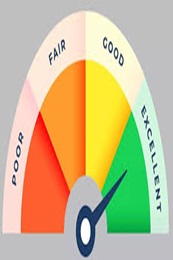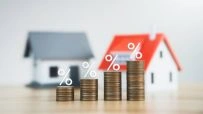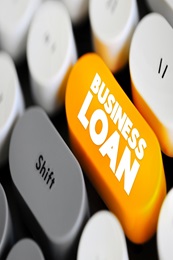Key Difference Between Secured and Unsecured Loans Explained
April 15, 2025

If you do a bit of research on loans, you will find two categories – secured and unsecured. While personal loans are considered as unsecured loans, home loans and two-wheeler loans fall into the secured loans category. So, what’s the difference between the two and how does it impact you while applying for a loan?
In this blog post, we will break down the key differences between secured and unsecured loans.
What is a Secured Loan?
A secured loan is backed by collateral, which could be your home, two-wheeler, or other assets. For example, let’s say you have applied for a home loan. The house you’re planning to purchase acts as a collateral. The bank holds the original sales deed or title documents until the loan is fully repaid. This collateral provides security to the bank in case you default on the loan. Secured loans are commonly used for larger amounts of money and offer several advantages.
- Lower Interest Rates: Since secured loans are less risky for banks due to the collateral provided, they usually come with lower interest rates compared to unsecured loans.
- Higher Borrowing Limits: With a secured loan, you can typically borrow larger amounts of money based on the value of your collateral.
Longer Repayment Terms: Secured loans often come with longer repayment terms, allowing you to spread out your payments over several years. For example, Ujjivan offers home loans for tenures up to 20 years. This can make your monthly instalments more affordable.
What is an Unsecured Loan?
An unsecured loan, as the name suggests, does not require any collateral. These loans are typically used for smaller amounts and do not involve pledging any assets. Since there is no collateral involved, banks take on more risk with unsecured loans, resulting in higher interest rates and stricter eligibility criteria.
- Higher Interest Rates: Unsecured loans come with higher interest rates compared to secured loans due to the increased risk involved for banks.
- Lower Borrowing Limits: Without collateral, banks may limit the amount you can borrow to mitigate their risk.
- Shorter Repayment Terms: Unsecured loans generally have shorter repayment terms, ranging from 5 to 7 years. This means you'll need to repay the loan within a shorter timeframe, leading to higher monthly instalments.
Secured vs Unsecured Loans: A Detailed Comparison
To help you make an informed decision, let's compare secured and unsecured loans in detail:
| Criteria | Secured Loans | Unsecured Loans |
| Interest Rates | Lower interest rates due to collateral involved | Higher interest rates as there is no collateral |
| Borrowing Limits | Higher borrowing limits based on the value of the collateral | Lower borrowing limits based on creditworthiness |
| Repayment Terms | Longer repayment terms, making monthly payments more manageable | Shorter repayment terms, requiring higher monthly payments |
| Risk Assessment | Collateral reduces the risk for banks | Banks evaluate creditworthiness and other factors to determine risk |
Which Loan Should You Choose?
Choosing between secured and unsecured loans depends on your specific financial situation and goals. Here are some factors to consider:
- Collateral: If you have valuable assets that can be used as collateral, a secured loan may be a suitable option for you. It offers lower interest rates, higher borrowing limits, and longer repayment terms, making it a cost-effective choice.
- Risk Tolerance: If you are uncomfortable risking your property or assets, an unsecured loan might be a better fit. However, keep in mind that it comes with higher interest rates and lower borrowing limits.
- Creditworthiness: Banks assess creditworthiness for unsecured loans based on factors like credit scores and income levels. If you have a good credit score and stable income, you may qualify for competitive interest rates on unsecured loans.
- Loan Amount: The amount of money you need plays a crucial role in deciding between secured and unsecured loans. Secured loans are suitable for larger loan amounts, while unsecured loans are ideal for smaller amounts.
Final Thoughts
Deciding between secured and unsecured loans is a crucial step when considering any significant financial commitment. By understanding the key differences, benefits, and risks associated with each option, you can make an informed decision that aligns with your financial goals.
Buying a house has never been this easy! Avail Ujjivan SFB’s wide range of affordable home loan products and enjoy a hassle-free loan journey. From house purchase loan to plot loans and home improvement loans, we have it all! Alternatively, you can browse through Ujjivan SFB product suite - our wide range of financial products are designed to make your financial life better.
FAQs
1. Can I obtain a secured loan without collateral?
No, the primary requirement for a secured loan is collateral. Without collateral, you may need to consider unsecured loan options.
2. Can I prepay an unsecured personal loan?
Yes, most banks allow prepayment of unsecured personal loans; however, they may charge prepayment penalties or fees.
3. Is it possible to convert a secured loan into an unsecured loan?
Secured and unsecured loans are two different types of loan categories. You cannot convert a secured loan to an unsecured loan.
4. What happens if I default on a secured loan?
If you default on a secured loan, the bank can sell the collateral to recover their funds.
5. Can I use an unsecured personal loan for home renovation?
Though you can use an unsecured personal loan for home renovation, the interest rates would be higher compared to home improvement loan. For home improvement projects, it’s best to apply for a home improvement loan.
6. How is loan security assessed by banks?
Banks assess loan security by evaluating factors such as creditworthiness, income stability, employment history, and existing debts.
7. How can I improve my chances of getting approved for an unsecured loan?
To improve your chances of approval, maintain a good credit score, have a stable income source, and manage your debts responsibly.
8. Why do unsecured loans have higher interest rates?
Unsecured loans involve higher risk for banks since there is no collateral involved, leading to higher interest rates.
Latest Blogs

Telangana Housing Board & KPHB Colony: A Guide to Affordable Urban Housing in Hyderabad
March 14, 2025
As Telangana continues its rapid urbanisation journey, two key housing entities—Telangana Housing Board (THB) and Kukatpally Housing Board Colony (KPHB)—have played critical roles in shaping the state's real estate ecosystem.

Does Checking CIBIL Score Frequently Lower Your Credit Points?
April 07, 2025
Imagine you're planning to apply for a home loan, a credit card, or even a car loan. Naturally, you want to ensure your CIBIL score is in good shape before proceeding.

Explained: Can NRIs Buy an Agricultural Land in India?
April 03, 2025
Real estate investment is often a top priority for Non-Resident Indians (NRIs) looking to retain strong financial ties to India.

How to Improve Your CIBIL Score from 600 to 750: A Step-by-Step Guide
April 02, 2025
Your CIBIL score is like your financial reputation—banks check it before approving loans or credit cards. If your score is hovering around 600, you might face difficulties in securing credit or may get loans with higher interest rates.

What Happens When You Leave Your Savings Account Unused?
April 01, 2025
Imagine waking up one day to find that your hard-earned money is locked away and inaccessible. Sounds stressful, right? This is precisely what happens when you leave your Savings Account inactive for too long.



